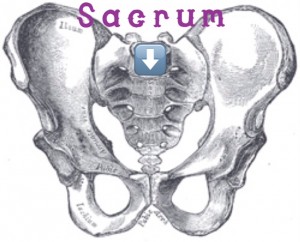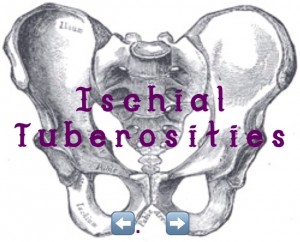Simply Sitting Better: Looking At the Pelvis
This is the first post in our August Guest Blog Series! Kayleigh Miller is a fantastic young violist who is dedicated to musician health. Check out her website at www.musicianshealthcollective.com.
If you follow health and movement blogs, you may have read recent headlines such as “sitting is the new smoking” and “the dangers of sitting.” Yet, for musicians, it can be difficult to get out of the chair when your job is to literally sit in a chair and make music.
Most people sit in a chair for 12-16 hours a day, which means that our bodies are adapting to this 90 degree angled flexion of the hips shape as it is the majority of our movement diet. As a musician, I often see others slumped forward, with rounded spines and head ahead of the spine, looking down at sheet music, cell phones, and ipads. When we sit in poor alignment, we do incredible disservice to our bones, soft tissues, and organs, whether we know it or not. Our bodies are like silly putty- our muscles and fascia conform to the shapes and stresses of our movement life, and when we perpetually sit in a slumped position with our heads forward, our muscles become tight and weak, the front of our body caves in, our viscera are compressed, and even our capacity to breathe is restricted! As a musician, this is a major problem, regardless of one’s instrument, and something to be addressed whether one is a teacher, administrator, orchestra musician, or student.
First thing, stop sitting on your sacrum and use your ischial tuberosities! Your pelvis is a bony funnel, beautifully structured to support sitting with two bony protuberances known as ischial tuberosities, or sitz bones. Your sacrum is the triangular bone in the back of the pelvis which begins as unfused vertebrae at birth, and begins to fuse in one’s 20’s and 30’s. When we sit on our sacrum, our pelvis is tucked and our spine rounds into a C curve whereas our spine should naturally have an S-shape. (In anatomy terms, this means that our pelvis is posteriorly tilted and our spine is in flexion.) When we learn to sit on our sitz bones, we can begin to understand where our spinal curves lie and how to position our heads over our spine rather than forward of our body. If we sit as a requirement of our job, we must to honor the natural curves of the spine as well as a neutral pelvis position, and look to teach our students the same.
 Start looking at how often you sit and your pelvic position while sitting- driving, teaching, playing, eating…see if you can start to cultivate some awareness of your posture. Even if you only think about it once or twice a day, that mental check-in can be incredibly helpful in changing long standing habits. While there are numerous aspects of alignment and postural cues to sitting, awareness is the first step. Working with a movement instructor can also be incredibly helpful, whether it’s a physical therapist, Alexander Technique Instructor, Feldenkrais practitioner or restorative movement instructor, and another’s perspective can be helpful in honing your own proprioception.
Start looking at how often you sit and your pelvic position while sitting- driving, teaching, playing, eating…see if you can start to cultivate some awareness of your posture. Even if you only think about it once or twice a day, that mental check-in can be incredibly helpful in changing long standing habits. While there are numerous aspects of alignment and postural cues to sitting, awareness is the first step. Working with a movement instructor can also be incredibly helpful, whether it’s a physical therapist, Alexander Technique Instructor, Feldenkrais practitioner or restorative movement instructor, and another’s perspective can be helpful in honing your own proprioception.





No comments yet.
Add your comment